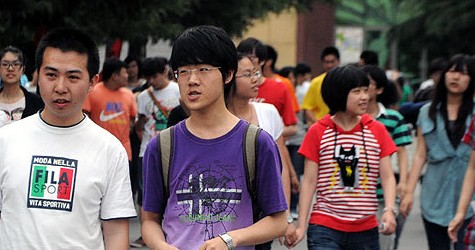About 9.33 million students have registered to take the annual national college entrance exams, or gaokao, on June 7 and 8 this year. This number is 240,000 less than last year's figure and represents the third straight year of decreased registration.

Ma Yan, a senior consultant for MyCos, a Beijing-based higher education consulting firm, said "the decline is mainly due to the shrinking number of high school students, which is a result of decreased birth rates caused by China's one-child policy."
"The downward trend in enrollment may last until 2018," Ma said.
Chinese students usually take college entrance exams at the age of 18 after completing 12 years of primary and middle school education.
National census figures show that the number of births in 2000 was 13.79 million, about 10 million less than the 23.54 million births recorded in 1990.
Growing interest in studying abroad has also had an impact on university enrollment, according to MyCos.
More than 72.3 percent of this year's applications will be accepted to the college of their choice, an increase of 4 percentage points over last year.
"As the suppliers of higher education, colleges used to play a much more dominant role in selecting their students. Students have more choices now, as competition is not as great," Ma said.
A report released earlier this year by China Education Online, an Internet-based educational resource operated by the Ministry of Education, predicted that universities will face financial pressures over the next ten years as enrollment continues to decrease.
Decreased enrollment will weaken revenues for many tertiary education providers, particularly those that are not well-known or that are privately run, the report said.
However, the decreased enrollment cloud could have a silver lining.
Zhang Li, director of the education ministry's education development and research center, said "the challenges arising from decreased enrollment may actually have a positive effect. Lower enrollment numbers will force colleges to improve the quality and structure of their programs and encourage higher education reform in general."





